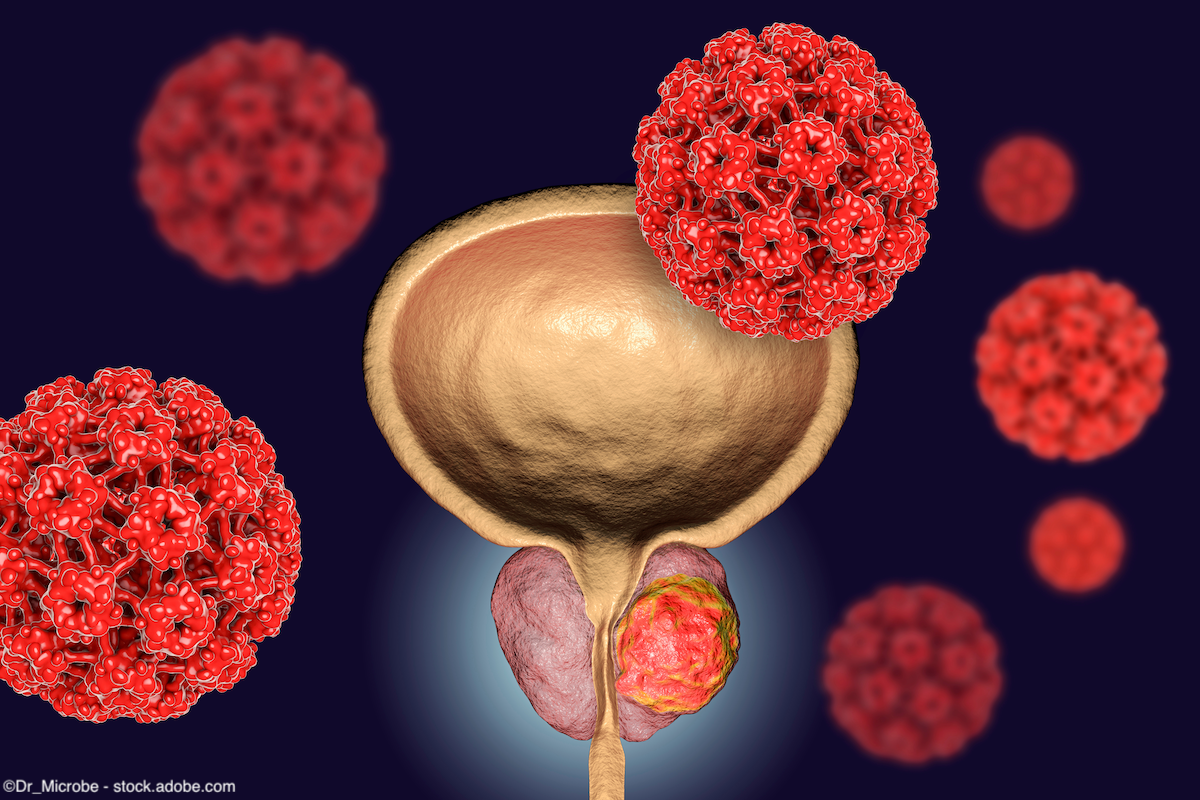Article
Liquid biopsy test can detect prostate cancer in microscopic amounts
Author(s):
"The test is fast, minimally invasive, and cost-effective, and opens up a new suite of tools that will help us optimize treatment and quality of life for prostate cancer patients,” said Edwin Posadas, MD.
“This assay may complement current imaging tools and blood-based tests for timely detection of metastatic progression," wrote the authors.

Investigators at Cedars-Sinai Cancer Center in Los Angeles, California have developed a liquid biopsy test that can detect and profile prostate cancers, even in microscopic amounts.1 Findings on the nanotechnology were recently published in Nano Today.2
“This research will revolutionize the liquid biopsy in prostate cancer. The test is fast, minimally invasive and cost-effective, and opens up a new suite of tools that will help us optimize treatment and quality of life for prostate cancer patients,” said Edwin Posadas, MD, in the news release. Posadas is the co-director of the Experimental Therapeutics Program at Cedars-Sinai Cancer Center.
The non-invasive test, called an extracellular vesicle (EV) Digital Scoring Assay (DSA), is comprised of an EV purification device called EV Click Chip and a reverse-transcription droplet digital polymerase chain reaction that quantifies mRNA markers from the purified EVs. EVs are microscopic packets of protein and genetic material shed by cells.
After blood samples are collected, the EV DSA isolates prostate cancer derived EVs from the blood and performs a rapid and sensitive analysis of the mRNA contents. The tool was shown to be efficient in the study conducted by Cedars-Sinai investigators, who used the tool to analyze blood samples from 40 patients with prostate cancer.
They found that the tool could distinguish localized prostate cancer from metastatic prostate cancer and outperformed other methods of detection, such as ultracentrifugation and precipitation, in purifying EVs. These results point to an advantage in using the method for extraction of prostate cancer information in small volumes to help detect metastasis and monitor disease progression.
“This assay may complement current imaging tools and blood-based tests for timely detection of metastatic progression that can improve care for [prostate cancer] patients,” the authors wrote.
A potential use for the tool could be for patients who undergo prostate removal and later experience elevated prostate-specific antigen levels.
If the remnants of the cancer have been left in the prostate bed, they can be managed with focused radiation therapy, though that comes with risks given that the prostate is also located near the bladder and rectum. If the cancer remnants have spread, focused radiation therapy will not prevent disease progression, and patients should instead receive systemic therapy.
However, the remnants are not always detectable using traditional methods, meaning that patients may undergo harmful radiation even when it is not effective. Investigators at Cedars-Sinai were able to detect remnants using the EV test, even when they were in trace amounts.
As a part of the study, 3 blood tests from patients with prostate cancer were retrospectively analyzed. The tool was able to detect changes in the mRNA signatures—even when the disease was undetectable by imaging—which correlated with the clinical behavior displayed by the patients. In 1 case, the patient had undergone focused radiation therapy despite them having metastatic disease. In the future, the tool could be used to avoid treating patients with radiation that isn’t effective in targeting the cancer.
The Cedars-Sinai team has been working on developing breakthroughs in EVs, and they are hoping to refine and expand their work in the near future.
“This type of liquid biopsy, coupled with innovations such as our Molecular Twin initiative, is key to next-generation precision medicine that represents the newest frontier in cancer treatment. And the type of progress we are making is only possible at an institution such as Cedars-Sinai Cancer, where we have patients, clinicians, scientists, and creative engineering minds converging as one unit to address the most challenging problems in cancer,” said Dan Theordorescu, MD, PhD, director of Cedars-Sinai Cancer Center.
References
1. Invention: a blood test to unlock prostate cancer mysteries. News release. Cedars-Sinai Cancer Center. Published February 2, 2023. Accessed February 6, 2023. https://www.newswise.com/articles/invention-a-blood-test-to-unlock-prostate-cancer-mysteries?sc=mwhr&xy=10016681
2. Wang JJ, Sun N, Lee YT, et al. Prostate cancer extracellular vesicle digital scoring assay—a rapid noninvasive approach for quantification of disease-relevant mRNAs. Nano Today. 2023;48:101746. doi:10.1016/j.nantod.2022.101746.
















